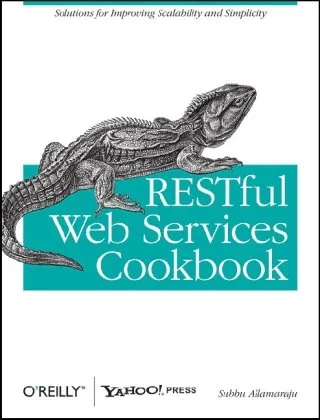Scalability Rules: 50 Principles for Scaling Web Sites
4.0
Reviews from our users

You Can Ask your questions from this book's AI after Login
Each download or ask from book AI costs 2 points. To earn more free points, please visit the Points Guide Page and complete some valuable actions.Related Refrences:
Persian Summary
In the rapidly evolving world of digital infrastructure, the ability to scale effectively and efficiently can make or break a business. 'Scalability Rules: 50 Principles for Scaling Web Sites' by Martin L. Abbott and Michael T. Fisher serves as an invaluable guide for architects, engineers, and IT professionals tasked with ensuring their web applications can handle expansive growth and peak loads. This book offers a blend of strategic insight and tactical guidance to seamlessly scale web architectures.
Detailed Summary of the Book
Abbott and Fisher build upon their vast industry experiences to distill the complexity of web scalability into 50 actionable rules. Each rule is crafted to address specific challenges encountered in scaling web sites and outlines both the why and the how of applying these principles in real-world scenarios. From architectural designs to deployment strategies, the book covers it all with practical examples and analogies that resonate with developers and decision-makers alike.
Particularly, the book emphasizes the importance of starting with a scalable mindset, rather than fixing scalability issues reactively. It stresses proactive planning, highlights patterns of scalability failures, and imparts lessons learned from scaling some of the largest web applications in the world. The authors advocate for scaling teams and processes in tandem with technology to ensure sustainable growth and success.
Key Takeaways
- Understand the different layers of a system that must be addressed to ensure scalability, such as application, database, networking, and process layers.
- Implement a decoupled architecture to minimize dependencies and enhance the flexibility and scalability of individual components.
- Leverage asynchronous processing and data partitioning to distribute load effectively across resources.
- Recognize the significance of caching strategies in improving performance and reducing database loads.
- Focus on cross-functional teams and effective communication strategies to align scaling efforts with business objectives.
Famous Quotes from the Book
"The key to effective scaling is starting with the end in mind, envisioning how your system will operate at ten or a hundred times your current capacity."
"Real scalability requires an organizational mindset that anticipates and prepares for growth instead of one that simply reacts to crises."
Why This Book Matters
In an era where user expectations are at an all-time high, websites that lose performance and responsiveness under heavy load risk losing audience and revenue. 'Scalability Rules' not only helps businesses prepare for success but also fortifies them against the pitfalls of technical debt that often plague rapidly growing companies.
The principles in this book demystify the process of scaling, transforming it from a daunting challenge into a series of manageable and actionable tasks. Moreover, it serves as a crucial reference for technology leaders aiming to build long-term competitive advantages through robust, scalable infrastructure strategies. Catering to both technical and managerial audiences, this book bridges the gap between technical implementation details and strategic business planning, making it a must-read for anyone involved in the web development lifecycle.
Ultimately, 'Scalability Rules: 50 Principles for Scaling Web Sites' is more than just a technical manual; it is a strategic playbook for modern businesses seeking to thrive in an increasingly interconnected world. It emphasizes collaboration, foresight, and resilience, providing readers with the tools needed to navigate the demands of tomorrow’s web applications today.
Free Direct Download
You Can Download this book after Login
Accessing books through legal platforms and public libraries not only supports the rights of authors and publishers but also contributes to the sustainability of reading culture. Before downloading, please take a moment to consider these options.
Find this book on other platforms:
WorldCat helps you find books in libraries worldwide.
See ratings, reviews, and discussions on Goodreads.
Find and buy rare or used books on AbeBooks.
1661
بازدید4.0
امتیاز0
نظر98%
رضایتReviews:
4.0
Based on 0 users review
Questions & Answers
Ask questions about this book or help others by answering
No questions yet. Be the first to ask!














